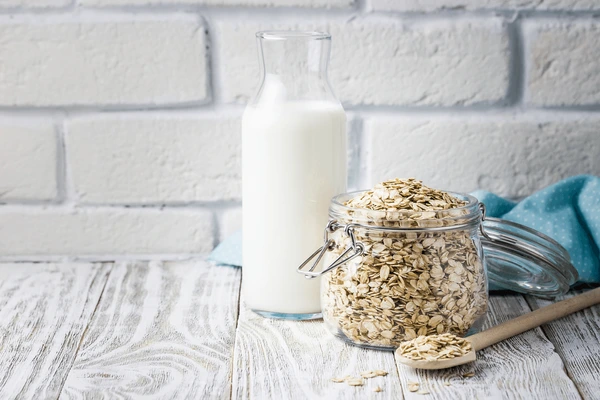
Are Dairy and Gluten Ruining Your Skin? What Science Says

30
Mar
Are Dairy and Gluten Ruining Your Skin? What Science Says
When it comes to skincare, most people focus on expensive serums, aesthetic treatments, and beauty rituals. But what if the real culprit behind your breakouts, dullness, or inflammation isn’t what you put on your skin—but what you put inside your body?
Dairy and gluten have been under fire in the wellness industry for their potential role in acne, eczema, and premature aging. But how much of this is fact, and how much is just another wellness trend? Let’s break it down.
Dairy and Your Skin: Friend or Foe?
Many people believe that dairy is a wholesome food, rich in calcium and essential nutrients. However, scientific studies suggest a strong link between dairy consumption and acne.
The Science Behind Dairy and Acne
Dairy products, especially milk, contain naturally occurring hormones like insulin-like growth factor-1 (IGF-1) and androgens. These hormones can trigger excessive sebum production, leading to clogged pores and acne flare-ups.
A study published in the Journal of the American Academy of Dermatology found that individuals who consumed high amounts of dairy—especially skim milk—were more likely to suffer from acne. This is because the processing of milk removes fat but increases hormonal content.
Furthermore, dairy can spike insulin levels, which leads to increased inflammation and worsens skin conditions like acne and rosacea.
Beyond Acne: Other Skin Issues Caused by Dairy
Dairy’s effects on the skin go beyond acne. Many people experience redness, puffiness, and under-eye bags due to dairy-induced inflammation. Some individuals also report that dairy worsens conditions like eczema and psoriasis.
Does this mean you should completely cut out dairy? Not necessarily. Some people tolerate dairy well, while others see a dramatic improvement in their skin after eliminating it. The key is to observe how your body reacts.
Gluten and Your Skin: The Hidden Trigger?
Gluten is a protein found in wheat, barley, and rye. It’s infamous for causing issues in individuals with celiac disease, but its impact on the skin extends beyond those with a diagnosed allergy.
Gluten Sensitivity and Inflammation
For those with celiac disease or non-celiac gluten sensitivity, consuming gluten can lead to chronic inflammation. Inflammation is one of the biggest contributors to skin conditions like acne, rosacea, and even premature aging.
According to research in the Journal of Clinical Gastroenterology, many individuals with undiagnosed gluten sensitivity experience skin conditions such as:

- Dermatitis Herpetiformis (DH): A severe, itchy rash caused by gluten intolerance.
- Psoriasis: Studies suggest that a gluten-free diet may reduce psoriasis flare-ups.
- Eczema: Some individuals with gluten sensitivity experience improvement in eczema symptoms after eliminating gluten.
Gluten, Gut Health, and Skin Connection
Your gut health directly influences your skin. When gluten triggers an inflammatory response, it can lead to a condition known as leaky gut syndrome, where the intestinal lining becomes permeable. This allows toxins and undigested food particles to enter the bloodstream, triggering systemic inflammation that manifests as acne, dull skin, or redness.
Should You Cut Out Dairy and Gluten for Better Skin?
If you’re struggling with persistent skin issues, doing a 30-day elimination diet for dairy and gluten can be a great experiment. Here’s how:
Step 1: Remove Dairy and Gluten
Avoid all dairy products, including milk, cheese, butter, yogurt, and whey protein. Also, eliminate gluten-containing foods like wheat, bread, pasta, and processed snacks.
Step 2: Monitor Your Skin
Keep a skincare journal to track any changes in your skin, digestion, and overall energy levels.
Step 3: Reintroduce One at a Time
After 30 days, slowly reintroduce dairy first and observe how your skin reacts. Then, do the same with gluten.
Many people report clearer, brighter skin after cutting out one or both of these food groups. However, if you see no changes, then dairy and gluten may not be the root cause of your skin concerns.
Alternatives to Dairy and Gluten for Better Skin
If you choose to cut back on dairy and gluten, here are some skin-friendly alternatives:
Dairy Substitutes:
- Almond milk, coconut milk, oat milk, or cashew milk
- Plant-based yogurts with probiotics
- Nutritional yeast (for a cheesy flavor without dairy)
Gluten-Free Alternatives:
- Quinoa, brown rice, and millet instead of wheat-based grains
- Chickpea or lentil pasta
- Gluten-free oats and flours
Beyond Diet: Other Factors That Affect Skin Health
While eliminating dairy and gluten might help, don’t overlook these crucial factors:
- Hydration: Drink at least 8 glasses of water daily for optimal skin hydration.
- Stress Management: Chronic stress increases cortisol, which worsens skin issues.
- Quality Sleep: Your skin repairs itself while you sleep—aim for 7–9 hours.
- Professional Skincare: Combine a clean diet with aesthetic treatments for maximum results.
At Midas Wellness Hub, we focus on holistic beauty—inside and out. Whether it’s a personalized skin consultation, advanced aesthetic treatments, or dietary guidance, we help you achieve the radiant skin you deserve.
Final Thoughts: The Skin-Diet Connection is Personal
Dairy and gluten can be skin disruptors for some, but not for all. The best approach? Listen to your body. If you suspect these foods are affecting your skin, try an elimination diet and observe the changes.
Remember—great skin isn’t just about avoiding certain foods. It’s about a balanced lifestyle, nourishing your body with whole foods, staying hydrated, and investing in proper skincare.
Have you tried going dairy-free or gluten-free for your skin? What was your experience? Share your thoughts in the comments below!


